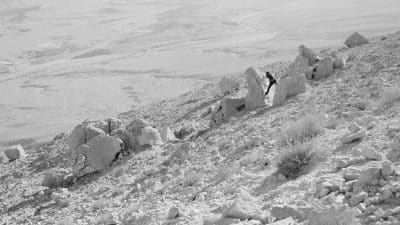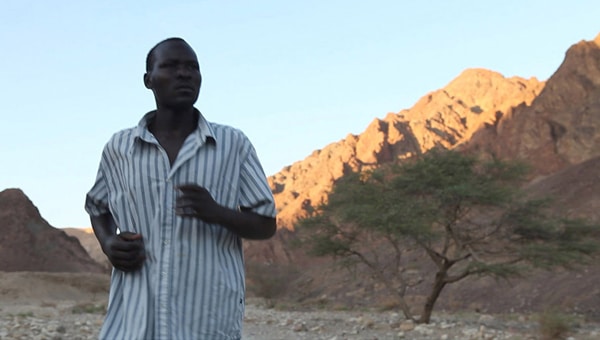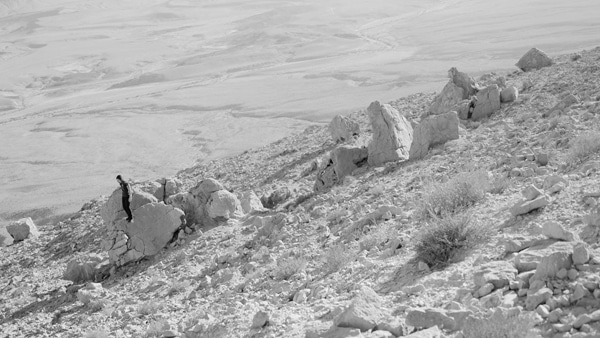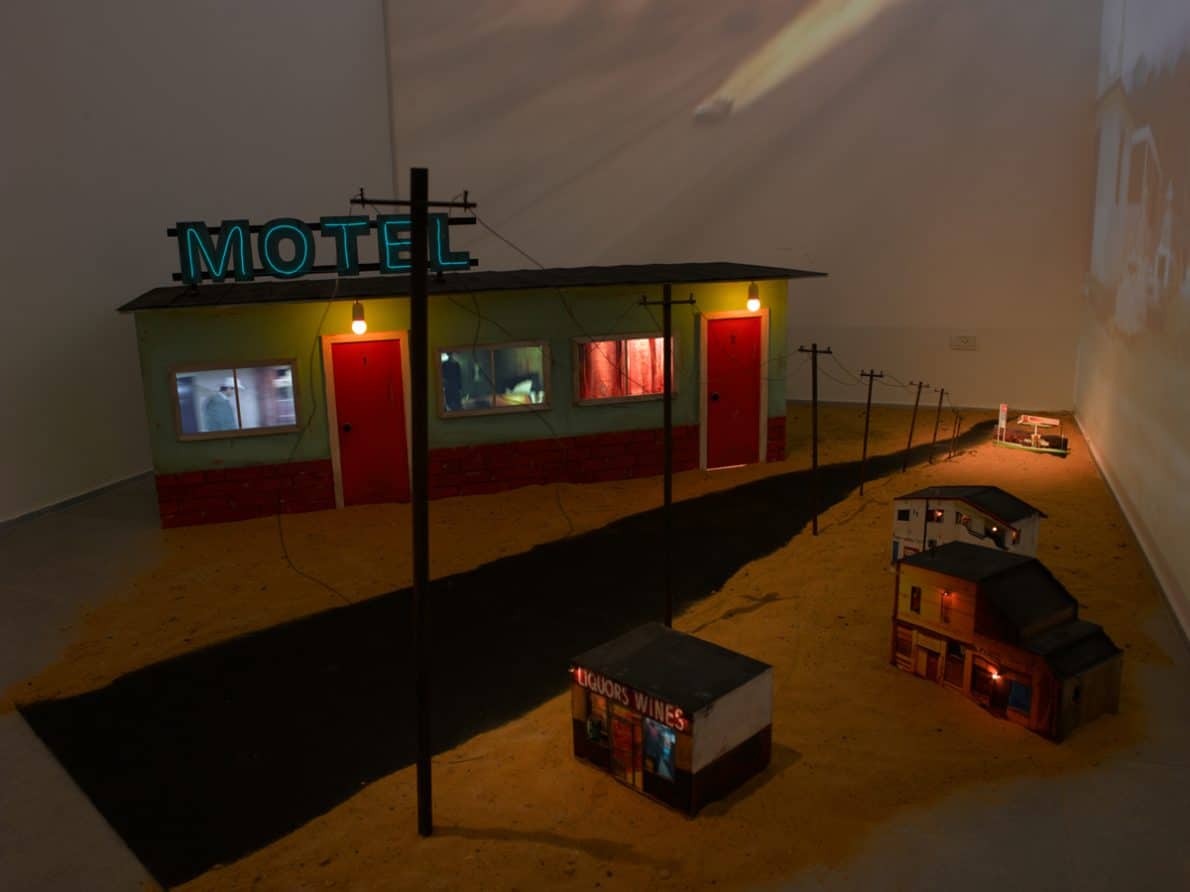This exhibition strives to investigate the desert as an open expanse on both the geographic and spiritual level, as a state of anticipating the unknown, and as a frontier region with its own rules that exists on the margins of time and space.
The desert is portrayed in the exhibition as a territory that invites geographic, social, and psychological quests of inquiry and discovery as well as a place that stirs questions about crossing internal and external borders. Some works in the exhibition have a markedly contemplative or dreamlike quality that stems from addressing odysseys and infinite, repetitive motion in empty expanses. Others depict a single human figure, usually in motion, wandering on a journey or a personal search. Additional layers of interpretation can be found in most of the works even though the social messages and commentary on political issues that they contain is hidden beneath the surface.
Tracey Snelling explores the gray area characteristic of border desert areas dotted with dusty, remote villages, particularly along the US-Mexican border. Chantal Akerman presents viewers with a screen that was set up by the border between Arizona, US, and Mexico to display documentation of a group of Mexican migrants, who had been recorded by US military cameras, walking toward an uncertain destination – perhaps sneaking across the border, perhaps being deported. Assaf Shoshan also employs endless movement of the human figure to represent an existential state with no hope or escape. His film Ta’aban shows a black-skinned man running in a desert landscape that gradually darkens. The fact that the man is a Sudanese refugee who was filmed in southern Israel hints at a political-social interpretation for the work. Shaun Gladwell weaves metaphysical-political significance into his documentation of the human body moving in the desert’s open expanses. It looks like a detail in a ceremonial, indecipherable dance – crossing Australia’s Mundi Mundi desert on motorcycle in one work and as a soldier in the deserts of Afghanistan in another work.
The quests and wandering sometimes reflect the process of creation or the artists’ lifestyles. Some of the artists live in or spent extended periods in the desert. Others set out for the desert to create; for them the desert is a metaphor for an emotional state and spiritual search. These works may bring to mind the tradition of Land Art that developed in the 1960s and 1970s in which the landscape served as a sculptural resource in the open space. Ezra Orion’s sculpture in the desert, like the art event he initiated in the Sinai sand dunes in 1982, is intended to create a spiritual and conscious experience; he aspires “to send the consciousness to other ranges” by utilizing the desert landscape. This landscape also becomes raw material in the works of Hinda Weiss and Sharon Glazberg; this is the outcome of their extended periods in the desert. Both artists construct collages of desert landscapes: Weiss’ collage is a digital video consisting of images of the landscape at different points; and Glazberg builds iron and wooden constructs that join to create a sandy landscape. They constitute the background for wandering and repetitive motion that forges a path that is a physical imprint of
sorts on the desert expanses.
Guest Curator: Ravit Harari
Nirit Dahan
Chantal Akerman, Shaun Gladwell, Sharon Glazberg, Ezra Orion, Assaf Shoshan, Tracey Snelling and Hinda Weiss.
Be'er Sheva municipality
Kivunim
Ministry of Culture and Sport





